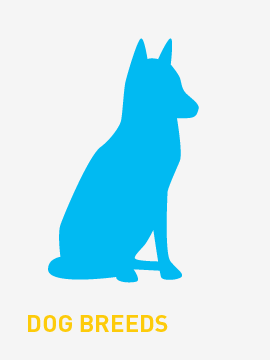The Snowshoe is a rare breed of cat originating in the United States of America in the 1960s. Snowshoes were first produced in Philadelphia when a Siamese breeder's cat gave birth to three kittens with white feet. The breeder, Dorothy Hinds-Daugherty, then began a breeding program to produce what were originally called "Silver Laces", crossing the strangely marked Siamese cats with bi-color American Shorthair cats and other breeds. When Hinds-Daugherty left the program, Vikki Olander began working with the cats and recruited new breeders, as well as worked towards full recognition within cat associations. Despite having existed for 45 years, Snowshoes are rare due to the difficulty of reproducing the correct coat markings. The marks are based on recessive genes for color points and on the co-dominant but variably-expressed piebald pattern gene, making it difficult to predict the appearance of offspring.
The coat coloration recognized by registries and associations is point coloration, and it comes in a variety of colors, though some organizations do not recognize certain colors. Snowshoe cats have an affectionate and docile disposition. Due to this, they do not do well under circumstances where they are left alone for long periods of time. Snowshoes are also very vocal, though their voices are not as loud as the Siamese, a cat found in their breed heritage. They are noted as being very intelligent and have the ability to learn tricks and open doors. These cats also enjoy water, and may swim.
History
In the 1960s, a cat, owned by Siamese cat breeder Dorothy Hinds-Daugherty, produced a litter of Siamese kittens in Philadelphia, Pennsylvania. Three of the kittens had unique markings, consisting of white points and feet. Intrigued by their looks, she began working to breed cats like them, using seal point Siamese with bicolor American Shorthairs. The offspring of those cats lacked the Siamese points, but by breeding the offspring to Siamese cats, the desired look was accomplished. Hinds-Daugherty named the breed "Snowshoe" because of their white feet. Hinds-Daugherty promoted the Snowshoe at local cats shows, though they were not recognized at the time. Hinds-Daughtery eventually abandoned the Snowshoe breeding program, and it was taken up by Vikki Olander.
Olander wrote the first breed standard for the Snowshoe, and succeeded in obtaining the Cat Fanciers Federation (CFF) and the American Cat Association's (ACA) "experimental breed" status for the Snowshoe in 1974. However, by 1977, Olander was the last breeder of the Snowshoe in the United States. After struggling to keep the breed alive, Olander was contacted by Jim Hoffman and Georgia Kuhnell, who were interested in the breed. Other breeders joined Olander, Hoffman, and Kuhnell, and they obtained the champion status from the CFF in 1983. In 1989, Olander left the program, as her fiancé was allergic to cats. However, by then the Snowshoe had a strong following, and the breed attained champion status with the American Cat Fanciers Association in 1990 and was recognized by The International Cat Association in 1993. Currently, breeders work to attain acceptance with the Cat Fanciers Association, but struggle with the lack of cats and breeders needed for the association's requirements.
In the UK a breeding programme was started in 1986. By 1998, Mollie Southall of Coldenufforsnow Cattery joined the programme, there was only one breeder left, Maureen Shackell. Between them, they had five cats to save the breed. Mollie's senior male, Ferry Vom Friedewald, is an import from Germany and gave us a completely new bloodline. Concerned with progressing the breed and widening the gene pool even further Kelly Cruse of Destrier Cats got involved in 2006, introducing new colours and patterns. Destrier Dodge Viper son of the famous Southpole JFK (face of the Snowshoe Cat Club) was the first Apricot Snowshoe known worldwide. Ultimately with team effort and dedicated breeders all over the UK bringing the Snowshoe Cat to full breed Status with the GCCF elected during the council meeting on 26 June 2013. Snowshoe Cats from 26 October 2013 will be officially be allowed to be shown at Championship level with the GCCF.
The Snowshoe Cat Association was the first Snowshoe club to establish in the UK, now called The Snowshoe Cat Club. In April 2005 the Snowshoe Cat Society was born.
Snowshoes are also fully recognized by the Fédération Internationale Féline, the American Association of Cat Enthusiastsand the Cat Fanciers Federation.
Popularity and breeding
The Snowshoe is a rare breed, partly due to the difficulty of breeding cats with markings and patterns that conform well to breed standards. The Snowshoe's pattern relies on recessive genes and other factors to produce desired results. One gene, which causes the "V" facial pattern is an example of incomplete dominance. If the offspring produced has two dominant genes for the marking, then the feature will be larger than a cat with one dominant gene. However, other factors may influence the feature, which makes it difficult to predict the outcome. Another issue is the white boots, which can be caused by a piebalding gene or a gloving gene. The genes are difficult to control, and many cats' boots extend too far up the leg, do not reach far enough up the leg, or the cat completely lacks white. As such, pet-quality Snowshoes usually have too much white, too little white, or white features are mismarked. The cats' body type further complicates breeding, as the breeder must achieve the correct head shape and ear set, while still maintaining the American Shorthair's body structure and the length of the Siamese.








